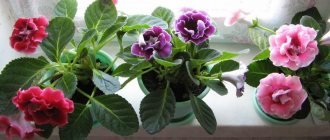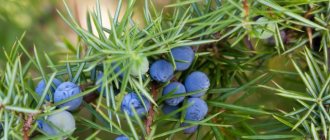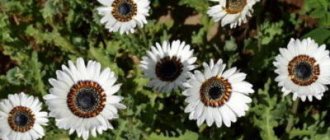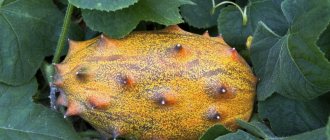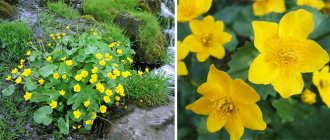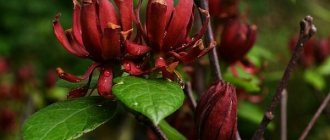Catananche amazingly combines winter hardiness with an appearance more typical of summer varieties. This plant is surprisingly airy and delicate, tirelessly producing quivering flowers with a delicate bluish-lilac color. Despite its fragility, catananche has no competitors both as a cut plant and in decorating compositions. After all, no other perennial can boast of such an ability to bring lightness and harmony to complex ensembles. Growing catananche is not at all difficult, except for the need to provide this crop with fairly frequent watering during drought.
Blue Catananche (Catananche caerulea). © flips99
General information
The flowers of “blue cupid”, as the plant is popularly called, are very similar to cornflowers, purple, yellow and white. There is also a variety of plant with pale blue inflorescences that resemble chicory.
Gardeners and biologists discovered this type of unusual dried flowers in the sixteenth century, after which the flower began to actively appear in many gardens, perfectly coping with its decorative purposes. At that time, they were also used to decorate flowerbeds and park areas, creating a cozy atmosphere for visitors.
The flower's homeland is the Mediterranean coast, but thanks to its hardiness and unpretentiousness, catananche quickly spread to countries with more severe climatic conditions.
Since in ancient times this bright plant was attributed with magical properties based on the ability to bewitch a loved one and get rid of unrequited feelings, in England it was called blue cupid.
The plant is unpretentious and does not like excessive soil moisture, so it is ideally suited for our climate zone and can decorate the garden plot or club of any gardener who wants to acquire this unusually beautiful plant.
Popular types
This genus is very small and includes only 5 species. At the end of the 16th century, Catananche took pride of place in the flowerbeds and gardens of Europeans. Two types are mainly used, but recently others have begun to appear in flower beds:
C. blue (lat. C. caerulea) or “Cupid's arrow” is the most popular species. A perennial plant of medium height (up to 60 cm) with strong straight stems and long narrow leaves. They are predominantly basal and covered with light silvery down. Baskets of reed flowers reach 5 cm in diameter, their petals are rectangular in shape with a fringed edge. Wrapped in thin film petals. They range in color from cornflower blue to lavender, with a deep purple center. Several varieties have been obtained for this species, for example, with white colored reed flowers and large-flowered varieties.
C. yellow (lat. C. lutea) is a low annual plant (up to 40 cm) with thin but strong stems, branching towards the top. The leaves are narrow, sparsely toothed, and pubescent. Small baskets (up to 3 cm) are attached to the peduncles. The reed flowers have a soft golden color. The petals are rectangular with finely fringed edges.
C. soddy (lat. C. caespitosa) - quite rare in culture. It is a bunch of narrow and long silvery leaves up to 7 cm long. The baskets are small, deep yellow in color, on very short peduncles. In nature it grows among stones, so it is perfect for rockeries.
C. sandy (lat. C. arenaria) is a very drought-resistant species. It has fairly long stems, the flowers are collected in small golden-colored baskets.
Varieties and types
Catananche Blue - the shrub reaches a height of up to 60 centimeters. The branches are lush and durable, giving the plant a hemispherical shape. The leaf blades are light green in color. They are located at the base of the flower. The plant has large flowers with a blue or lilac tint. The center of the inflorescences is dark and has a bright yellow anther. Varieties of the crop may have colors of white, lilac and yellow.
Catananhe Yellow - is a low herbaceous annual, reaching a height of up to 40 centimeters. The leaf blades have a belt-like type, medium length, slight pubescence, jagged edges and a dark green tint. The stems are smooth with small yellow inflorescences located at the tops. The flowering time of the plant is in summer.
Catananche Soddy - the plant is practically not grown in cultivated form. The foliage of the flower is dense, dark green, long, narrow, located at the root. Short stems are decorated with small inflorescences of a bright yellow hue. This variety of catananche grows on rocky slopes.
Catananje Sandy
A plant of this species can grow in depleted soil and tolerates drought well. The leaf blades are narrow, short, and have a rich green tint. The branches are long, yellow-green in color. The inflorescences are medium-sized, resemble cornflowers and have a sandy tint.
Catananhe Zabava - a lush shrub reaches a height of 60 centimeters. It has dense grey-green branches with strap-like leaf blades found predominantly at the root. The inflorescences are large and have a light lilac hue. The flowering time of the plant is in summer.
Catananche Blue Cupid - this variety is one of the most common among gardeners. The height of the bush reaches 60 centimeters. The stems are strong and erect. The leaf plates are collected in basal rosettes, reaching a length of up to 30 centimeters. The stems and lower surface of the leaves are slightly pubescent. The inflorescences of this variety are large and pale blue in color. The flower petals are jagged and the center has a purple tint.
Catananche Cupid's Arrow - this plant variety is the most popular among the rest. The name for this variety was invented by Europeans. Catananche is a lush, herbaceous, perennial plant reaching a height of up to 60 centimeters. The branches are strong and erect. The leaf blades are long, dark green, belt-like, located in the root zone. They have slight pubescence. The inflorescences are large, resembling light purple daisies with a purple core. The crop blooms throughout the summer.
Species diversity of Catananche
Only two types of catanche flowers are cultivated: annuals and perennials. Popular plant varieties include:
- Catananche blue, or Cupid's Arrows - the height of the bushes is 60 cm, the shoots branch, giving the flower the appearance of a hemisphere. The leaves are blue, picked up at the base, the stems are strong, the flowers are large, 5 cm in volume, turquoise or lilac in tone, the core is purple, looks like a contrasting spot with bright yellow stamens. Subspecies of the plant have different petals: white - the Dutch lily variety, purple - the Zabava variety and deep lilac - the Mayor variety.
- Catananche yellow is an annual shrub 40 cm, basal rosette with a peduncle 15 cm, yellow flowers 2-3 cm in volume, open in June, leaves and petals are lancet, flowers are like stars, their bright yellow core resembles burning light bulbs.
- Catananche is turfy - it is not often cultivated, it grows on siliceous slopes, has a powerful short stem 15 cm long and leaves 7 cm long, flowers of medium size, bright yellow.
- Sandy catananche is the most unpretentious of all, grows on sandy lands, is resistant to drought, has flowers up to 4 cm in volume, pale yellow, almost snow-white.
Catananche cultivation and care in open ground
Although the blue cupid cannot be called a plant popular among gardeners, it still decorates some garden plots, fully coping with its decorative role. This is a beautiful perennial plant that delights gardeners all summer with a scattering of its unique inflorescences of dried flowers.
Growing it is quite simple, since it is absolutely not picky about care, and blooms much more profusely and much longer than cornflowers, which it is so similar to.
In order for the decorative effect of the plant to be fully revealed, the place for planting it must be sunny, because even a slight shadow will affect its growth, development and abundance of flowering.
For this reason, the bed for catananche should be sunny, warm and protected from drafts and cold winds. The soil for the plant must be nutritious with a neutral pH and must be drained.
Echinacea perennial also belongs to the Asteraceae family. It can be grown when planted and cared for in open ground without much hassle, if you follow the rules of agricultural technology. You can find all the necessary recommendations in this article.
Conditions required by catananche
In order for the catananche to reveal all its decorative potential, it needs to be planted in a sunny area. Even the slightest shading negatively affects the abundance of flowering, so it is better not to experiment and immediately choose open areas. Places for landing catananche should be warm, protected from cold drafts.
The soil for catananche is suitable for any of the high-quality and calcareous soils. The main thing is that the soil is well-drained, loose and light in texture. The reaction of the soil is critically important, and for catananche, planted even on neutral soil, it will be necessary to add a portion of lime to the soil annually (in early spring).
Blue Catananche (Catananche caerulea). © Monceau
Catananche transplant
Since catananche is not a long-lived perennial, then, after three years of flowering, its decorative qualities begin to decline. Therefore, to avoid such problems, they should be replanted every four years and old plants should be replaced with young ones.
Plant transplantation is carried out in late spring - early summer. The distance between plants should be at least 30 centimeters. It is necessary to move the catanache to a new place with a ball of earth, thus protecting the root system from damage.
The plant tolerates transplantation normally and almost immediately takes root and blooms. However, to reduce stress, displaced flowers should be well cared for and watered thoroughly to encourage them to resume growth more quickly.
Catananche care
This plant is not too demanding to care for. The main thing is to provide the catananche with compensation for drought by introducing mandatory watering into the garden care program on hot and dry days. The higher the temperature, the more abundant the watering should be. At normal rainfall levels, there is no need to water the plant. When carrying out procedures, be careful not to over-moisten the soil: dampness has a very bad effect on catananha, inhibiting growth and flowering.
Catananha will not need feeding, regardless of age. This crop grows well in poor soil. Traditional organic fertilizers are not applied to it even in early spring.
Blue Catananche (Catananche caerulea). © Nigel Burkitt
Fertilizer for catananche
The soil in the flower bed must be constantly loosened and weeded to allow air to flow to the root system. At the beginning of spring, lime should be added to the soil; it must be applied every year.
Catananche practically does not need fertilizing, so in the fall it will be enough to fill the bed with fallen leaves and apply complex fertilizing twice during the flowering period.
Rules of care
Catananche is considered a very tenacious and unpretentious plant. Prefers light turf or sandy loam soils, neutral or slightly alkaline. Feels good even on depleted substrates, but needs drainage. It is better to dry out the soil than to over-water the roots, so water the bushes only during prolonged drought.
To get abundant flowering, the plant is planted in the sunny side or in slight shade. Catananche is not afraid of strong or cold winds. Its thin stems easily bend to the ground, but quickly recover.
The soil must be regularly loosened and weeded. This will provide air access to the roots. In spring, lime should be added to the ground; this procedure is carried out annually. The plant rarely needs fertilizing; it is enough to mulch the soil with fallen leaves in the fall or apply complex fertilizer 1-2 times during the flowering period.
After the baskets wither, decorative seed pods remain, so timely pruning of wilted buds is not necessary. But in the fall, the entire above-ground part is cut off.
The plant is well adapted to frost and can withstand short-term temperature drops down to -30°C. However, in snowless, cold winters, it is advisable to cover the roots with branches and fallen leaves.
With proper moisture and absence of dampness, the bushes do not suffer from parasite invasion and are resistant to disease.
Flowering catananche
The plant blooms all summer, but the peak occurs in the middle. Large inflorescences are located at the top of the branches and can have white, yellow, blue and purple shades. The flower petals are narrow and jagged, and the center is dark with yellow stamens.
After the flowers fade and the petals fall off, a silver-colored box with round, small seeds remains.
Description of Catananche
Catananche is a herbaceous plant belonging to the Asteraceae family. The plant is perennial, but in our latitudes it takes 2-3 years to grow. It reproduces well by self-seeding, so the plantings are renewed on their own, just clear the area of old shoots. The root system is superficial, not massive.
The stems are thin, elastic, erect, in the upper parts they have many lateral shoots, due to which a lush bush about 1 m high is formed. If you make a cut, milky juice will begin to secrete. Bare shoots are abundantly covered with short hair.
The leaves are pinnate, straight with a slight bend, painted bright green, reach a length of 15-30 cm, and form a basal rosette. The leaves have smooth edges and long, sparse teeth in the upper part.
When does Catananche bloom?
Flowers in the shape of a complex basket adorn the tops of the stems. One inflorescence can consist of 5 buds, opening alternately. On average, the buds reach a size of 4-5 cm. The petals come in rows: the longest are at the bottom, shortened closer to the center. The petals are stiff and the edges of the outer petals are jagged. The flower is painted in soft blue, lilac, yellow or white with a darker center: purple, brown or black. The core contains bright yellow long stamens.
- Blooms profusely from May to July, until the first frost, single flowers may appear.
- In place of the faded flowers, a pretty silvery box with small seeds appears. The testis is ovoid, covered with short scales.
- 1 g of weight contains approximately 500 seeds.
Reproduction of catatanche by dividing the bush
Reproduction using bush division is not very common, since this method is very troublesome. To carry it out, you should dig up the plant in mid-May and divide it into four parts and immediately transplant it with a land manager to a new place.
In order for plants to grow and develop normally, a distance of 30 centimeters should be left between them.
Reproduction
Reproduction of catananche occurs in most cases with the help of seeds, less often by dividing the bush. In a greenhouse, seeds are planted in early spring (sowing depth about 1 cm), and moderate soil moisture is maintained by spraying. Seedlings are planted in garden plots in May, since its root system is very delicate, seedlings are dug up with a clod of earth, the distance between them should be about 20 cm. Young plants actively develop and delight with flowers in the same season.
In open ground, when growing catananche from seeds, they can be planted after warm weather sets in (May-June), they germinate in about three to four weeks, but usually bloom only the next year. Bushes of adult catananche are carefully divided for propagation in May and immediately placed in permanent areas.
Catananche growing from seeds
The seed propagation method can be seedlings or soil. Seed material will have good germination only for three years after collection. Both of these methods are convenient, however, the moment when the plant begins to bloom will depend on the one chosen.
In order to propagate the plant by seedlings, the seeds should be sown in early March. For sowing, light, fertile soil is used with the addition of a small amount of sand and leaf soil. Sowing is carried out in separate pots, one seed at a time, so that when transferring the seedlings to open ground, the young roots are not damaged.
The seed material should be buried one centimeter into the soil, after which it is necessary to cover the containers with seeds with film until entrances appear, which will begin to break through the mixture in three weeks. After the shoots appear, you need to remove the film from them and place them in a sunny place.
To prevent the seedlings from stretching out, the temperature should be gradually reduced to 15 degrees. Only when the plants grow up can they be moved to the garden bed. This is done at the end of May. Transplantation into open ground is carried out together with a lump of soil.
Sowing catananche seeds in open ground
You can also sow seeds directly into open ground.
The procedure can be carried out both in May and October. Those seedlings that were planted before winter are often used as seedlings. When using seed material, young plants will begin to bloom only the next year. When planting seeds in the ground, they must be buried to a depth of 2 centimeters. The distance between seeds should be from 5 to 7 centimeters, and the distance between rows should be from 15 to 20 centimeters. The shoots will appear in about a month, after which they should be given careful care so that they grow faster.
Use of catananche
Catananche looks spectacular in massive group plantings. It is densely covered with flowers of pleasant colors that fit harmoniously into compositions of any style. Low-growing varieties are suitable for growing on rocky areas and in rock gardens.
Decorative garden decoration
Flowers are used in the center of the composition; they are not able to create a hedge or decorate borders due to their wide, spreading shoots. Looks good next to low-growing, brightly flowering plants.
Inflorescences on tall stems are used to create live and dry bouquets. Strengthening and stimulating decoctions are still made from the stems and leaves of catananche.
Diseases and pests
Catananche has high resistance to diseases and pests. However, with improper care, or more precisely, with severe waterlogging of the soil, the plant can become infected with a fungus, leading to rotting of the root system.
To save the flower, it will be necessary to transplant it to a new place, after first removing the damaged roots and treating them with a one percent solution of potassium permanganate.
Use in landscape design
Catananche will always look harmonious in garden plots. These charming delicate stars are planted in groups in mixborders, on carpet beds and on lawns. A good solution would be to use it on dry rocky areas.
Catananche combines well with other low, drought-resistant ornamental plants.
Highlander (lat. Polygonum) or buckwheat is a genus of herbaceous wildly growing and abundantly flowering plants of the Buckwheat family (lat. More
Imperata cylindrica (lat. Imperata cylindrica) is the only species of the genus Imperata used in landscape design. Plants attract attention. Further
Shaker (lat. Briza) or briza is a genus of herbaceous plants of the Poaceae family (lat. Poaceae). The Latin name of the genus occurs. Further
Hakonechloa (lat. Hakonechloa) or Hakonechloa is a genus of herbaceous plants belonging to the family Cereals (lat. Poaceae). Representatives of this. Further
Oxalis (Latin Oxalis) is a genus of annual or perennial herbs, rarely subshrubs of the Oxalis family (Latin Oxalidaceae). In English . Further
Freesia (lat. Freesia) is a genus of perennial flowering plants of the Iris family (Latin Iridaceae). Was opened in South Africa. Further
There is no limit to beauty. These words also apply to representatives of the euphorbiaceae family (lat. Euphorbiaceae), identified by classifiers as a separate family. Further
Catananche is not a very popular and widespread garden crop. And in vain. This beautifully flowering perennial combines the best qualities of winter-hardy perennials with the riot of color of annuals. All summer long, blue Catananche daisies delight with a scattering of flowers in the garden or flowerbed. This plant is surprisingly airy and delicate, constantly blooming delicate flowers with a blue-lilac color. Catananche flowers look great when cut and in compositions; the bush of this perennial winters well even at -30 degrees and tolerates summer heat well.
In appearance, catananche resembles a hybrid of cornflowers, daisies and chicory. Basket-shaped inflorescences bloom at the ends of thin peduncles. The color scheme of the catananche includes blue, violet, mauve and white. The flowers are amazingly beautiful, with dense petals wavy around the edges and a darker center. There are varieties in which the petals are arranged in one row, and there are also terry varieties. Recently, tubular varieties of catananche, in which the petals seem to be rolled into tubes around a beautiful center, have been gaining popularity. Catananche flowers reach four centimeters in diameter. The flowering period lasts almost all summer. Classic varieties bloom from May to August, and new hybrid varieties continue flowering right up to the first frost.
The most popular varieties of catananche are the Blue Cupid and Zabava varieties.
After the catananche flower fades, a capsule is formed in the middle of the flower, in which up to five hundred seeds ripen.
Catananche seeds are grown in two ways: sown directly on a flower bed or grown flower seedlings and then transplanted into open ground.
Catananche is sown directly into open ground in mid-spring or early summer, choosing dry, sunny places. Catananche blue is light-loving and quite resistant to drought. In order for the plant to develop well and fully demonstrate its decorative qualities, it must be grown in the sun, the area should not be shaded and protected from cold winds. The soil for growing catananche must be of high quality, with a moderate lime content, good drainage and light in structure. For catananche, low soil acidity is fundamentally important, so liming of the site must be done every year.
A more effective way to grow catananche is to grow through. To grow from seedlings, catananche seeds are sown in the first ten days of March. They do this in light soil, scattering the seeds over its surface and crushing it with a thin layer of sifted earth. Then the soil is moistened with a sprayer and covered with film or glass until the seeds germinate. In such a mini-greenhouse, young shoots are grown until two pairs of leaves appear, after which they are transplanted into separate pots. Catananche seedlings are planted in open ground at the end of May - in June.
When transplanting seedlings, it is important not to destroy the earthen ball and not damage the roots of the plant. The method of growing seeds - seedlings - bed makes it possible for the plant to take root better and produce more abundant and strong color.
An important step in growing catanache is dividing the bush. It must be carried out every three to four years, when the intensity of flowering begins to decline. To maintain an attractive and neat appearance of the flower garden, it is necessary to renew the plants every three to four years by planting young catananche seedlings or dividing the old bush into several and planting it in a new place.
Catananje in winter
This plant is a cold-resistant plant; it is not afraid of cold and frost, but it is better not to be lazy and cover it for the winter.
The problem is that much more destructive for catananche are temperature changes and lack of snow. Therefore, in these conditions, the shelter becomes not so much a refuge from the cold, but a means of stabilizing weather conditions, compensating for climatic phenomena familiar to the middle zone.
Application of catananche
Catananche is grown to give the site a beautiful appearance. The garden will stand out with flowering blue bushes.
- The bushes are used to create large curtains, rockeries and rock gardens, beautiful live and winter bouquets.
- To create winter bouquets, some gardeners dry catananche and store them in a dry place.
- Catananche is recommended to be combined with perennials and annuals that bloom in white, purple, yellow or red flowers. Therefore, the bushes look harmonious with sage, bluebells, low fescue, bush roses and other plants.
Briefly about the plant
The elegant flower has a short, fibrous and branched root system, a strong, erect, leafless stem covered with hairs at the top. Narrow, entire or toothed leaves are usually located near the roots.
It blooms with violet-blue or white flowers, which are collected in baskets. There can be from 1 to 5 baskets on one stem. The plant can also be two-colored with a blue center and white edges. Fresh bouquets are formed from flowers.
Catananche blue cupid blooms in June-September. There are plant varieties that bloom from May to July. It bears fruit with an oblong ribbed achene covered with hairs or bristles with sharp thin scales.

